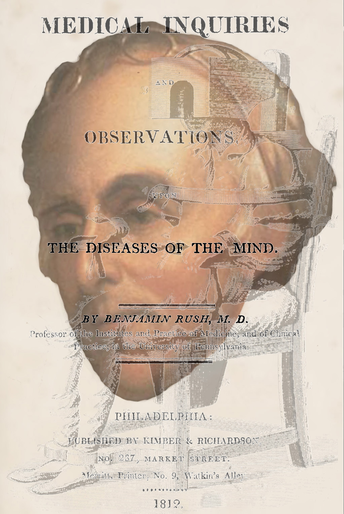Benjamin Rush1746–1813
Rush was not born in Europe, but he received his medical training there. More specifically, he, like many other medical students, was drawn to Edinburgh. There they had access to patients in wards where instruction was given. It has recently been stated that the popularity of these new teaching methods was evident: “The output from the Scottish Medical Schools, but Edinburgh in particular, was considerable during the second half of the eighteenth and early nineteenth centuries. The training that their students received at that time was second to none, and many American students that returned to the United States played a prominent role in establishing the Medical Schools in that country”. Rush was among those American students taught by Cullen and he was a fellow student with John Brown. Of his time as a medical student Rush wrote: “The two years I spent in Edinburgh I consider as the most important in their influence upon my character and conduct of any period of my life. The public lectures and private conversations of the Professors not only gave me many new ideas, but opened my mind so to enable me to profit by reading and observation”. He was later to be known as the ‘father of American psychiatry’, in part because of his writing but also because of the treatments he introduced. His portrait embodies both of those endeavours. His book on The Diseases of the Mind was published in the year before his death, and it went to several editions thereafter. It was the first American text on psychiatry and it embraced an enlightened view of the ways in which the insane should be treated. Among the treatments he introduced was the ‘tranquilising chair’. Like Erasmus Darwin and at a slightly later time, he argued that tranquillity could be restored to the insane if the blood flow to the brain was stabilised, and restraint in the ‘tranquilising chair’ was considered a suitable means of achieving this. Darwin proposed that the blood flow to the brain could be increased by placing patients in a rotating bed or chair and Rush also devised a ‘gyrator’ for this purpose.
